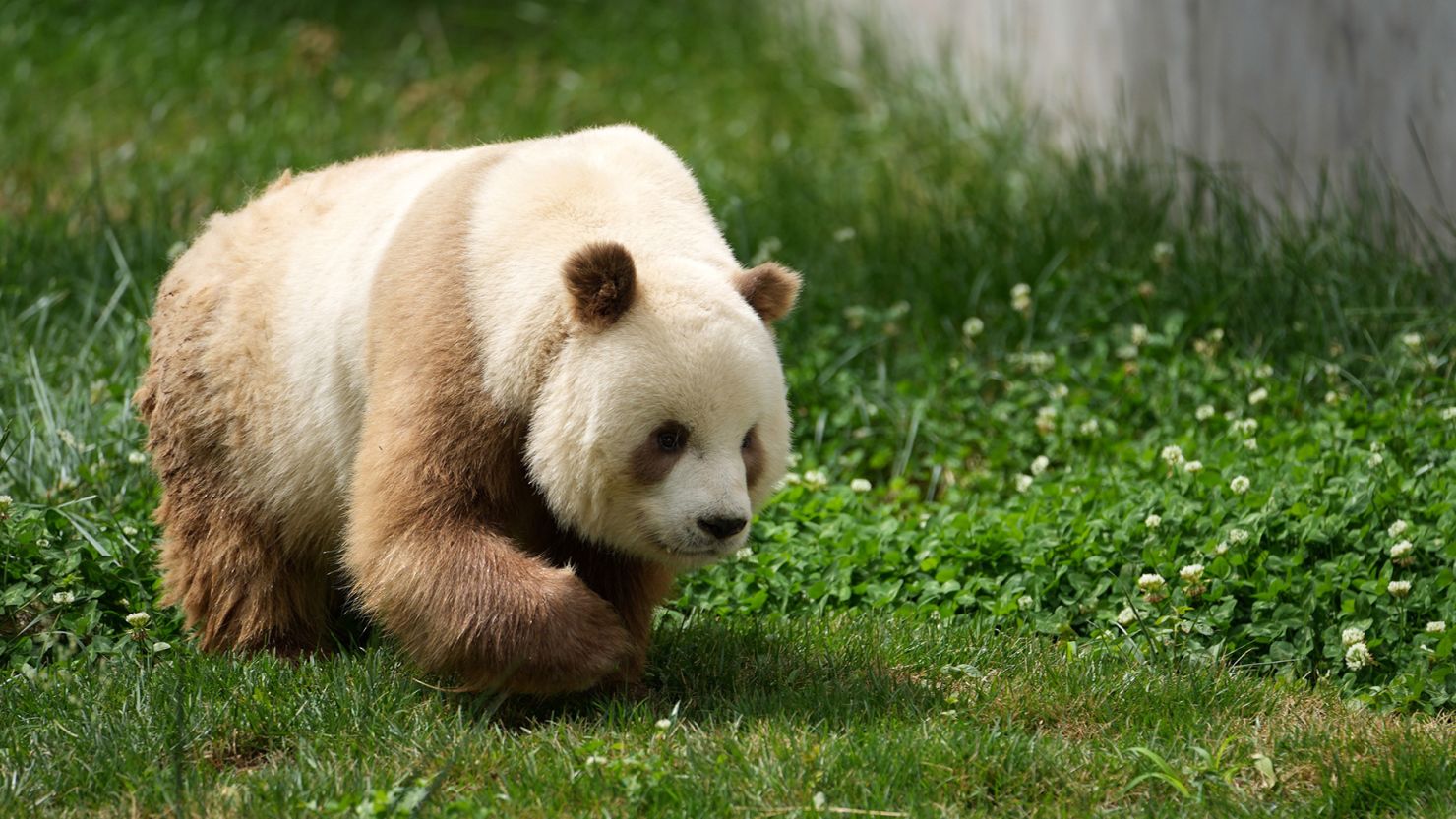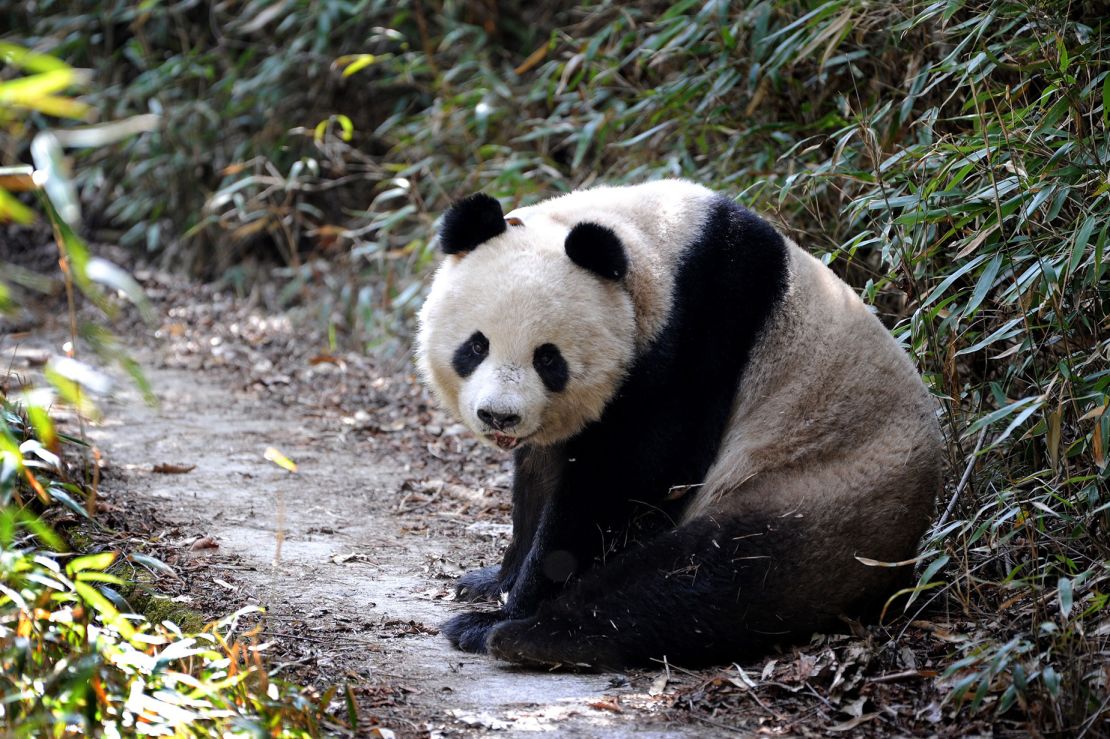
In Short
- Recent genetic research sheds light on the natural variation in brown pandas’ coat colors.
- Scientists uncover insights into the genetic mutation behind this rare trait.
TFD – Discover the groundbreaking genetic research revealing the secrets of brown pandas’ unique coat color.
Given its remarkable coloring, the giant panda is an incredibly recognized animal.
There are, however, a few big pandas that aren’t purely black and white. These magnificent brown-and-white-furred animals live in a single mountain area in China. And now, scientists may have unraveled the mystery of the extremely rare pandas’ unusual coats, according to new research.
The research, which included examining the genetic makeup of several pandas both in the wild and in captivity, has revealed that brown-and-white coat variations in pandas are not indicative of inbreeding in a declining population, but rather a natural variation.
Dandan, a female brown panda, was the first panda ever discovered by science. In the Qinling Mountains of Shaanxi province’s Foping County, a local ranger discovered the sick bear in March 1985. Up to her passing in 2000, the panda was kept in captivity.
Eleven sightings have been reported since Dandan was discovered decades ago, and these sightings have been officially recorded through news outlets or through firsthand reports that the authors of the most recent study shared with the PNAS journal on March 4.
The fact that brown pandas appear frequently suggests that this characteristic might be inherited. The scientists noted that it is still unknown what genetic basis there is for the brown-and-white coat color.
Professor of wildlife ecology and conservation biology at the Chinese Academy of Sciences’ Institute of Zoology in Beijing and senior author Dr. Fuwen Wei suggested that a deeper comprehension of the unique coloring may help guide efforts to breed brown-and-white pandas in captivity. The International Union for Conservation of Nature Red List of Threatened Species lists the giant panda as a vulnerable species.

A family tree of pandas
The researchers looked at Qizai, a male brown panda that was saved as a cub in 2009 from Foping National Nature Reserve in Hanzhong, to learn more about the characteristics that underlie the trait. As of right now, he is the only brown panda kept in captivity.
Under a microscope, the brownish fur of Qizai was shown to have smaller and fewer melanosomes than the hair samples from three black-and-white pandas. Melanosomes are tiny structures located in cells that are responsible for the pigmentation of mammals’ skin and hair. Furthermore, the research team discovered that there was a higher likelihood of unevenly formed melanosomes.
Subsequently, the researchers assembled Qizai’s family tree using genomic data. His wild mother, a black-and-white female panda named Niuniu, was identified from fresh scat, or bear feces, collected at the nature reserve. She has a tracking collar.
The researchers also identified the black-and-white panda that was born in captivity in 2020 and was Qizai’s son. (The research team subsequently used the genetics of a larger population of pandas to identify Qizai’s father, Xiyue, a black-and-white panda that lived in the wild but was followed.)
Using data from scat and blood samples, the scientists examined the genetic information from Qizai’s family members and compared it with the genetic information from 12 black-and-white pandas from the Qinling Mountains and 17 black-and-white pandas from other parts of China.
The researchers were able to demonstrate that Qizai had two copies of the recessive characteristic on the gene known as Bace2, whereas his parents and son only had one copy. None of Qizai’s direct family members had brown fur.
Recessive features, like red hair or blue eyes in humans, can be inherited via a person’s genes without manifesting as an outward feature. For a trait, like Qizai, to manifest in the progeny, each parent has to carry a copy of the genetic variant and pass it on.
An enigma is solved by genetic analysis
The scientists also sequenced the genome of Dandan, the first known brown panda, by examination of a tissue sample kept in ethanol for almost 20 years. The researchers discovered that Dandan shared the same recessive feature.
After that, the researchers looked more closely at 192 giant pandas that were black and white to confirm that Bace2 was the faulty gene. The mutation responsible for the brown coats was limited to two pandas from Shaanxi’s Qinling Mountains, not Sichuan province, which is home to most of China’s giant pandas.
The researchers deleted the genomic sequence they had determined to be responsible for the mutation in the Bace2 gene in 78 lab mice using the CRISPR-Cas9 gene-editing technique in order to validate their findings. The mice’s melanosome size and quantity were decreased by the alteration.
Wei, who is also president of Jiangxi Agricultural University in Nanchang, Jiangxi province, China, stated that knockout mice have light brown coats.
Given that the pigmentation system is comparatively conserved (common) among mammals, it demonstrates that this loss has the ability to change a mouse’s coat color. Thus, it is quite probable that this mutation affects a brown panda’s coat color.
Inbreeding versus natural variation
The genetic mutation’s cause is unknown. Wei stated that it has to do with the unique climate of the Qinling Mountains, which is distinct from that of Sichuan. He said that contrary to earlier suspicions, the genetic alteration did not seem to be the product of inbreeding.
“It is more likely to be a result of natural variation rather than inbreeding. Our kinship analysis indicates that Qizai’s parents are not closely related,” Wei added.
The fact that the distinctive coloring did not seem to be the consequence of inbreeding, according to Tiejun Wang, an associate professor in the department of natural resources at the University of Twente in the Netherlands, is encouraging news. Wang was not involved in the work; he has studied brown pandas.
Wang, who claimed to have spent ten years working as a field ranger in the highlands, stated, “For those who are concerned about this species, this is a positive development.”
The team’s “tremendous efforts in trying to shed light on this scientific question” were praised by Wang.
Conclusion
The study’s findings mark a significant step in understanding and conserving brown pandas, offering hope for their future survival and genetic diversity.
Connect with us for the Latest, Current, and Breaking News news updates and videos from thefoxdaily.com. The most recent news in the United States, around the world , in business, opinion, technology, politics, and sports, follow Thefoxdaily on X, Facebook, and Instagram .
